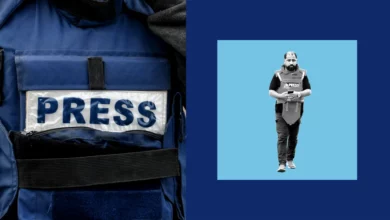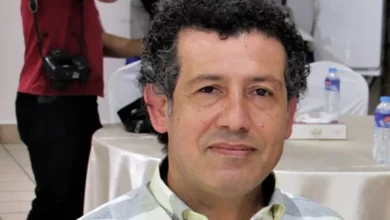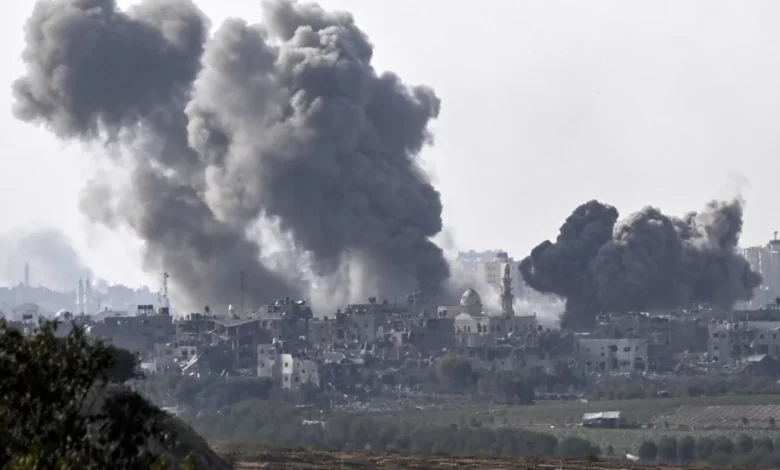
Conditions in Gaza have deteriorated dangerously, experts say, with serious shortages of clean water and food as tens of thousands of Palestinians attempt to flee crippling airstrikes and an Israeli ground offensive.
Israel’s military said Saturday its forces are readying for the next stages of the war, including “combined and coordinated strikes from the air, sea and land” in response to the unprecedented October 7 terrorist attacks by the Islamist militant group Hamas, which controls the enclave.
At least 1,400 people were killed and many taken hostage during Hamas’ rampage, the Israel Defense Forces (IDF) told CNN on Sunday, in what US President Joe Biden described as “the worst massacre of Jewish people since the Holocaust.”
Further escalation of the long-running conflict increasingly risks spilling over regionally, prompting the Pentagon to order a second carrier strike group and squadrons of fighter jets to the region as a deterrence to Iran and Iranian proxies, such as Hezbollah in Lebanon.
“We are on the verge of the abyss in the Middle East,” United Nations Secretary-General Antonio Guterres warned in a statement Sunday.
He issued urgent appeals to Israel and Hamas: “To Hamas, the hostages must be released immediately without conditions. To Israel, rapid and unimpeded aid must be granted for humanitarian supplies and workers for the sake of the civilians in Gaza.”
“Each one of these two objectives are valid in themselves. They should not become bargaining chips and they must be implemented because it is the right thing to do,” he said.
For days, Israel has cut off the Gaza population’s access to electricity, food and water, prompting warnings of dire humanitarian crisis.
Pope Francis on Sunday also called for the establishment of humanitarian corridors in Gaza and for the release of hostages taken by Hamas.
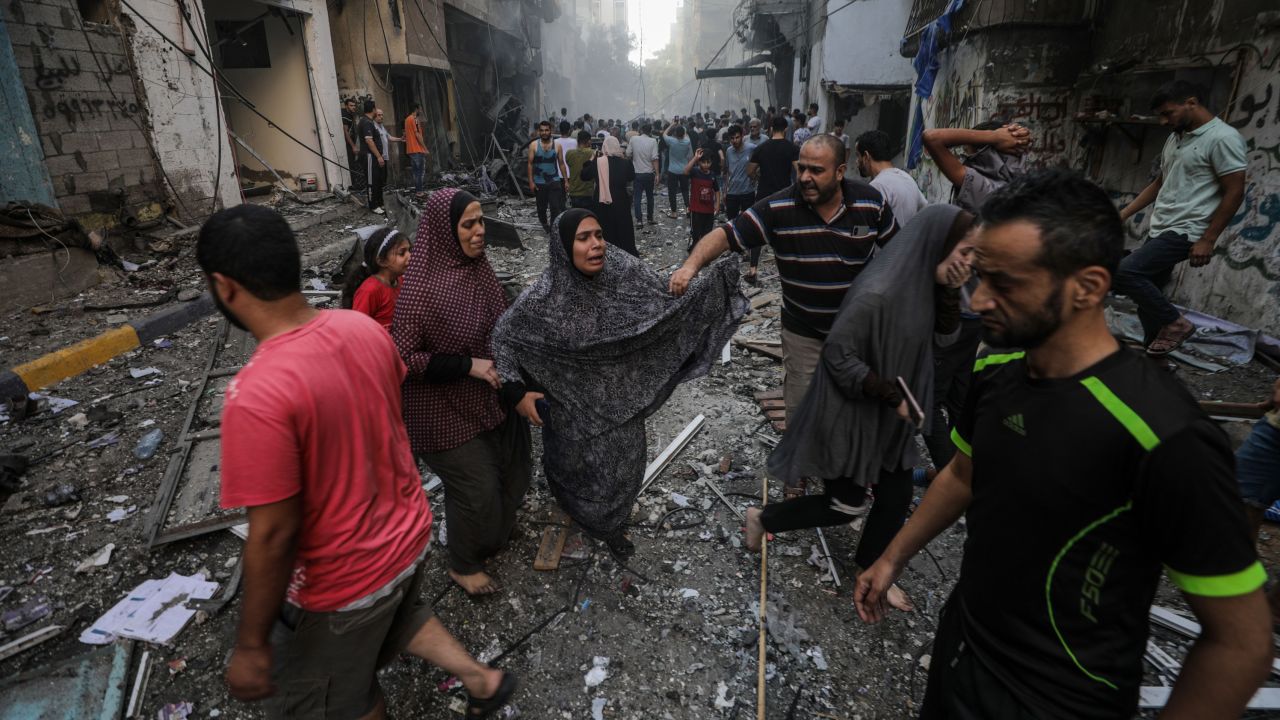
In over a week of bombardment, Israeli airstrikes have killed least 2,670 people in Gaza, including hundreds of children, according to the Palestinian Health Ministry.
Casualties in the besieged strip over the past eight days have now surpassed the number of those killed during the 51-day Gaza-Israel conflict in 2014, a ministry spokesperson said.
A growing number of nations, global rights groups and organizations are calling on Israel to respect international rules of war, urging the protection of civilians’ lives, and not to target hospitals, schools and clinics in densely inhabited Gaza. Many families, some of whom were already internally displaced, are now crammed into an even smaller portion of the 140-square-mile territory.
Hamas rocket attacks on Israel have meanwhile continued into the weekend. A barrage on the city of Sderot saw residents being evacuated to other areas of the country on Sunday.
Calls for Israel to respect rules of war
Gaza is suffering shortages of every kind, including body bags, say aid groups. Internet access, through which residents communicate their plight to the world, is shrinking. Food stocks are dwindling, the World Food Programme has warned.
Hospitals have run out of painkillers and many Gazans are beginning to suffer from severe dehydration due to lack of drinking water, according to medical NGO Medecins sans Frontieres.
“The situation is very difficult…today for two hours we searched for drinkable water—even drinkable water is not available anymore,” said Dr. Mohammed Abu Mughaiseeb, the organization’s deputy medical coordinator in Gaza. “There is food. No electricity, no pumping of normal water as well, the hospitals are barely working… They are bombing all day. We don’t know what’s going to [happen] tomorrow and where we are going.”
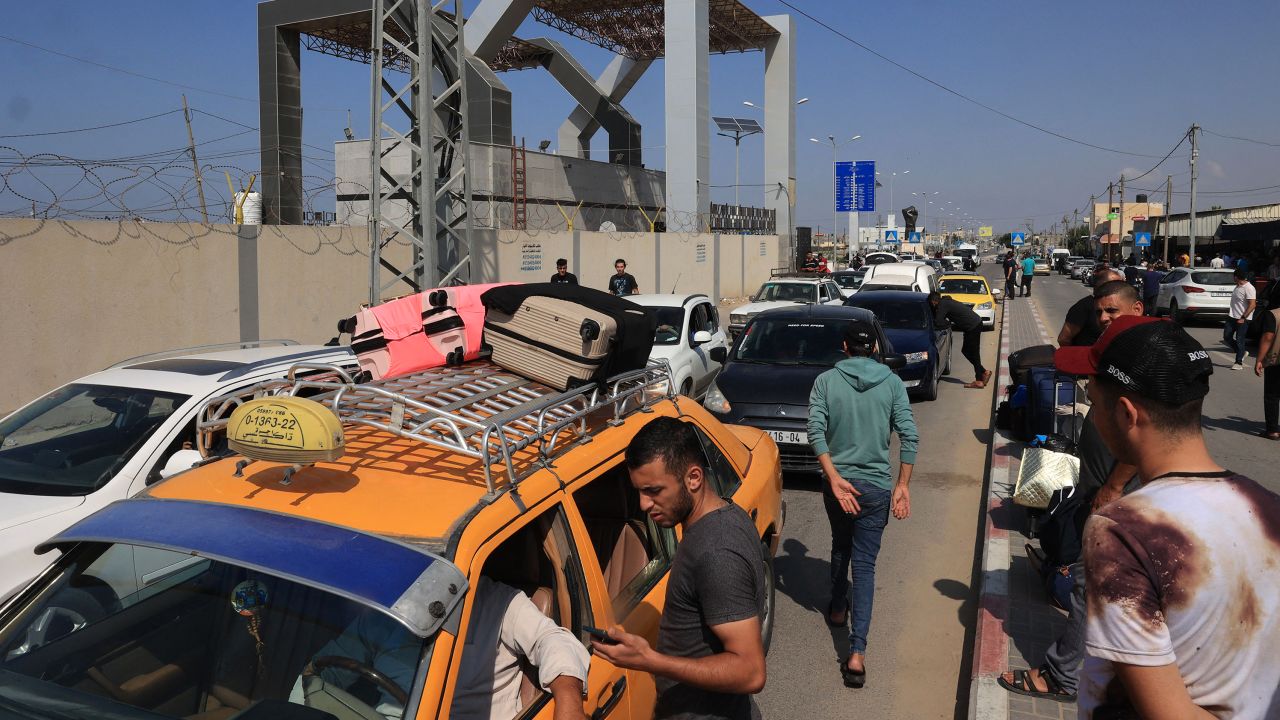
Israeli Prime Minister Benjamin Netanyahu’s office told CNN Sunday that Israel has restored water to southern Gaza, where many Gazans have been told to flee. However, the director of the Water Authority there said he didn’t know if water was available because the electricity necessary to pump water for use had not been restored.
Israel is also in the process of creating a humanitarian zone where food, water and other provisions could be accessed in Gaza, Israeli ambassador to the United States Michael Herzog told CNN’s Jake Tapper on Sunday.
The UN could not confirm the plan. “What we can tell you is that we have nothing to confirm at this time, but obviously we have been working round the clock with various interlocutors to ensure humanitarian access in Gaza,” the spokesperson for the UN Secretary-General, Stéphane Dujarric told CNN.
Aid has been piling up on the Egyptian side of Rafa crossing, the only entrypoint into Gaza that Israel does not control.
But so far, the crossing appears nonfunctional; Egypt says that airstrikes on the Gaza side have made roads inoperable, and Jordan has said it is seeking assurance that aid convoys will not be targeted by Israeli warplanes.
Footage on Sunday showed aid deliveries continuing to arrive into Egypt’s El-Arish stadium in preparation to enter Gaza once the Rafah crossing is open.
On the Gazan side, thousands of people are stuck at the crossing, with several citizens of the US and other countries telling CNN they have been unable to leave the embattled territory.
US Secretary of State Antony Blinken promised Sunday that “Rafah will be open,” after meeting with Egyptian President Abdel Fattah el-Sisi
“We’re putting in place with the UN, with Egypt, Israel, with others, the mechanism by which to get the assistance in and to get it to people who need it,” Blinken said.
He also announced the appointment of former US Ambassador to Turkey David Satterfield to help coordinate US aid efforts. Satterfield will be “on the ground tomorrow” in Israel, he said.
El-Sisi said on Sunday during his meeting with Blinken that Israel’s response to the deadly Hamas attack had gone beyond its right to self-defense.
It “amounts to the collective punishment of the Gaza Strip, home to 2.3 million Palestinians,” he said.
His criticism echoed that of several rights groups, with Amnesty International and Norwegian Refugee Council describing the forced relocation of civilians as a violation of international law earlier in the week.
Mass evacuation ahead of Israel’s expected escalation
The clock is ticking for residents fleeing south through the battered streets of Gaza after the Israeli military told civilians to leave northern areas of the densely populated strip. More than half of Gaza’s 2 million residents live in the northern section that Israel said should evacuate, or risk danger in its next phase of retaliation.
“We will commence significant military operations only once we see that civilians have left the area,” IDF spokesperson Lt. Col. Jonathan Conricus told CNN early Sunday.
“I cannot stress more than enough to say now is the time for Gazans to leave.”
Civilians packed into cars, taxis, pickup trucks and donkey-pulled carts. Roads were filled with snaking lines of vehicles strapped with suitcases and mattresses. Those without other options walked, carrying what they could.
Videos showed explosions and bodies along a Gaza evacuation route on Friday. Several bodies, including those of children, could be seen on on a flat-bed trailer that appears to have been used to evacuate.
The IDF on Sunday denied that the Israeli military was involved in the strike on Salah Al-Deen street, suggesting an explosive device had been planted on the route.
“It was only this morning that we were able to confirm and announce that this was not on IDF strike,” IDF spokesperson Lt. Col. Peter Lerner said in an interview with CNN.
It appears from footage the IDF has viewed that “the explosion came from beneath,” he said.
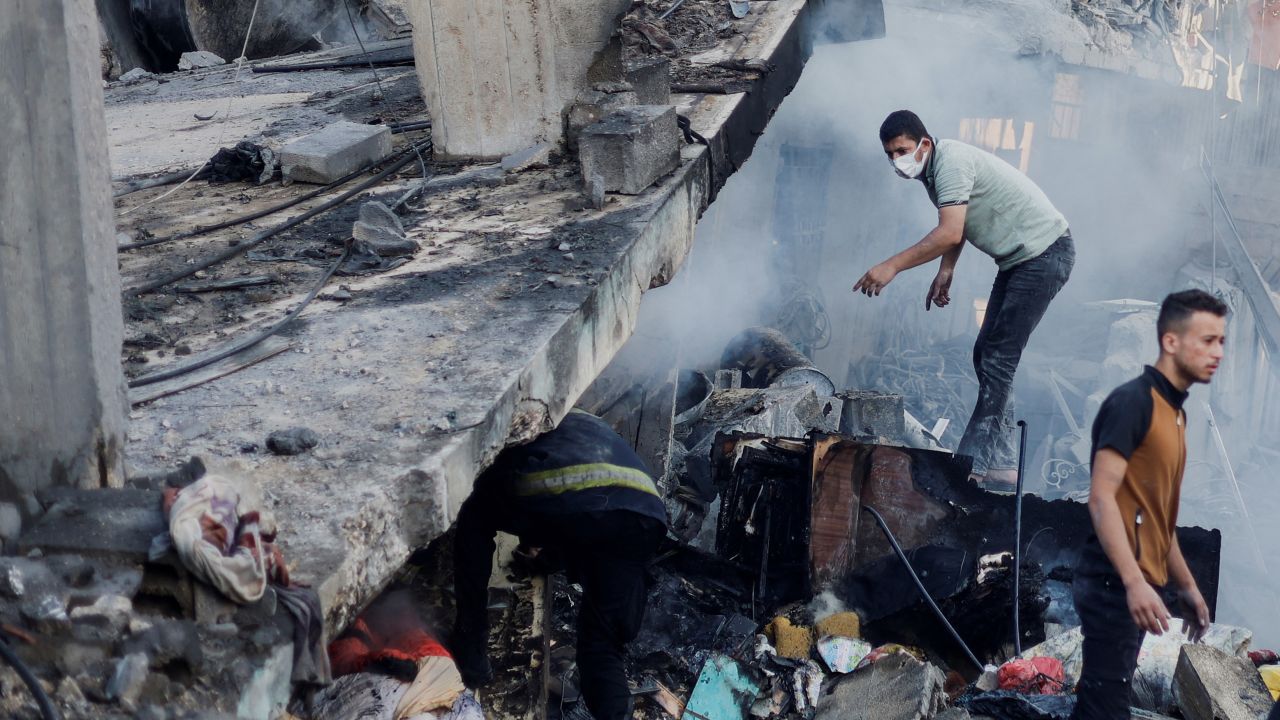
Several UN agencies have warned that mass evacuation under siege conditions will lead to disaster, and that the most vulnerable Gazans, including the sick, elderly, pregnant and disabled, will not be able to relocate at all.
Palestine Red Crescent Society spokesperson Nebal Farsakh told that although they had been notified by Israel to evacuate Al-Quds hospital in Gaza City, they did not have the means to do so.
“We have around 300 patients at the hospital. Some of them are in the intensive care unit. We have children in incubators. We can’t evacuate them,” Farsakh said.
What would a ground invasion look like?
Israel, which has massed troops and military equipment at the border with Gaza, said its ramped up offensive will feature hundreds of thousands of reservists and encompass “a wide range of operational offensive plans.”
In addition to widespread airstrikes, Israel’s army is preparing troops for an “expanded arena of combat,” the IDF said in a statement on Saturday. The preparations have placed “an emphasis on significant ground operations.”
Hamas has shown a level of military capability far beyond what was previously thought, and a recent CNN investigation found it is probably well-prepared for the next phase of the war.
The IDF hit 250 military targets mostly in northern Gaza on Sunday, it said in a statement. It claimed to have killed Muetaz Eid, Commander of the Hamas Southern District of National Security, during the strikes. Eid was located through intelligence from the IDF and the Israel Security Agency, the statement said. Hamas did not immediately comment on the IDF report.
Complicating an Israeli offensive in Gaza are up to 150 hostages captured by Hamas – including soldiers, civilians, women, children and the elderly – and who are being held in the crowded enclave.
IDF spokesperson Conricus said it is a priority to get hostages out of Gaza, despite the difficulty that a dense urban area adds to the fight.
Pointing to the “elaborate network of tunnels” that Hamas has, he said hostages “are most likely held underground in various locations.”
“Fighting will be slow. Advances will be slow, and we will be cautious,” he said.
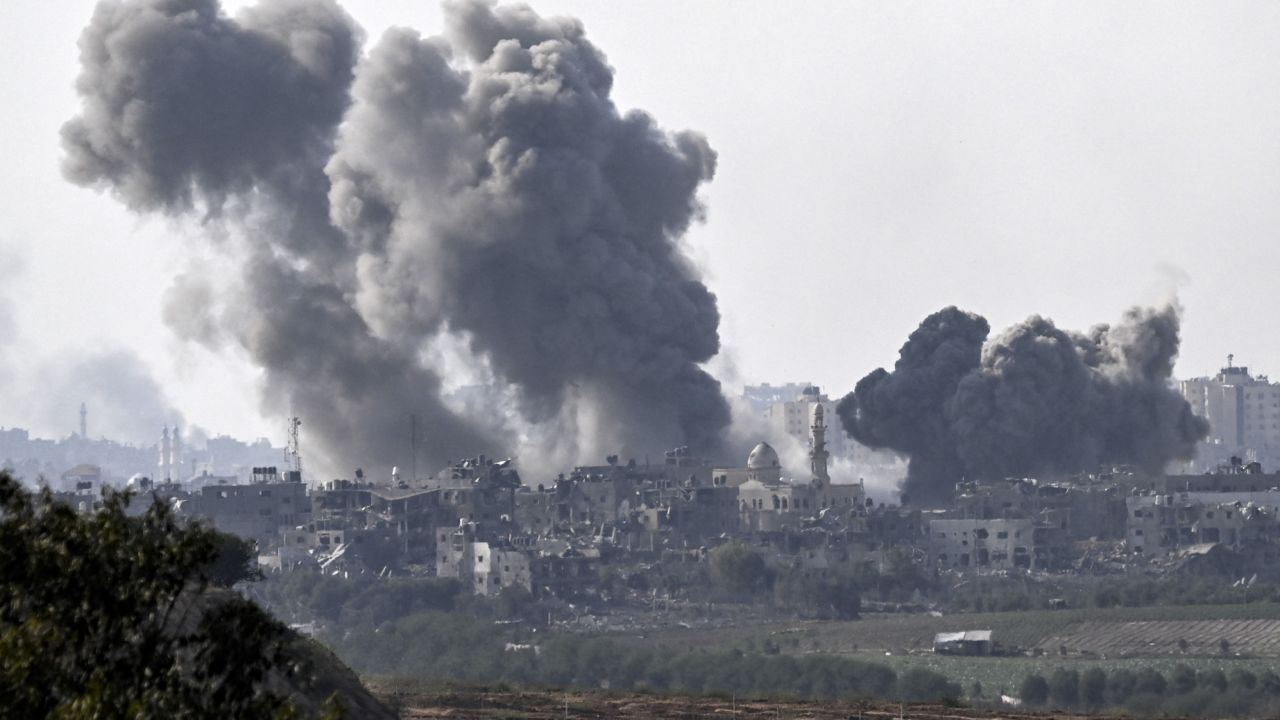
Speaking to CNN’s Wolf Blitzer on Sunday, Israeli President Isaac Herzog said his country is trying to “move civilians to that they will not be hurt” while going in to “uproot that infrastructure of terror.”
He also showed small booklet which he said contains tactics used by Hamas to kidnap and torture people.
“This was found on the body of one of the terrorists. This is a booklet, okay? This booklet is an instruction guide how to go into civilian premises, into a kibbutz, a city, a moshav… how to break in. And first thing, what do you do when you find the citizens? You torture them,” Herzog said.
In a first clear and stark denouncement, Palestinian Authority President Mahmoud Abbas on Sunday condemned the Hamas attacks, saying the militant group’s actions “do not represent the Palestinian people.”
Abbas “affirmed his rejection of the killing of civilians on both sides and called for the release of civilians, prisoners and detainees on both sides,” during a phone call with Venezuelan President Nicolas Maduro on Sunday, the official Palestinian press agency WAFA reported.
He also warned against forcing Palestinians out of Gaza, which he said would represent “a second catastrophe for the Palestinian people,” according to WAFA.
Regional concerns grow
As Israel battles Hamas, it also faces the threat of a wider conflict on new fronts.
Israel has said it is ready in case there are attacks from neighboring Lebanon or Syria.
Syria’s military reported late Saturday that an “air aggression” by Israel, originating from the Mediterranean Sea, damaged Aleppo International Airport and rendered it nonoperational.
Meanwhile, Iran’s Mission to the UN warned on Saturday that if Israel does not stop its attacks on Gaza, “the situation could spiral out of control and ricochet far-reaching consequences.”
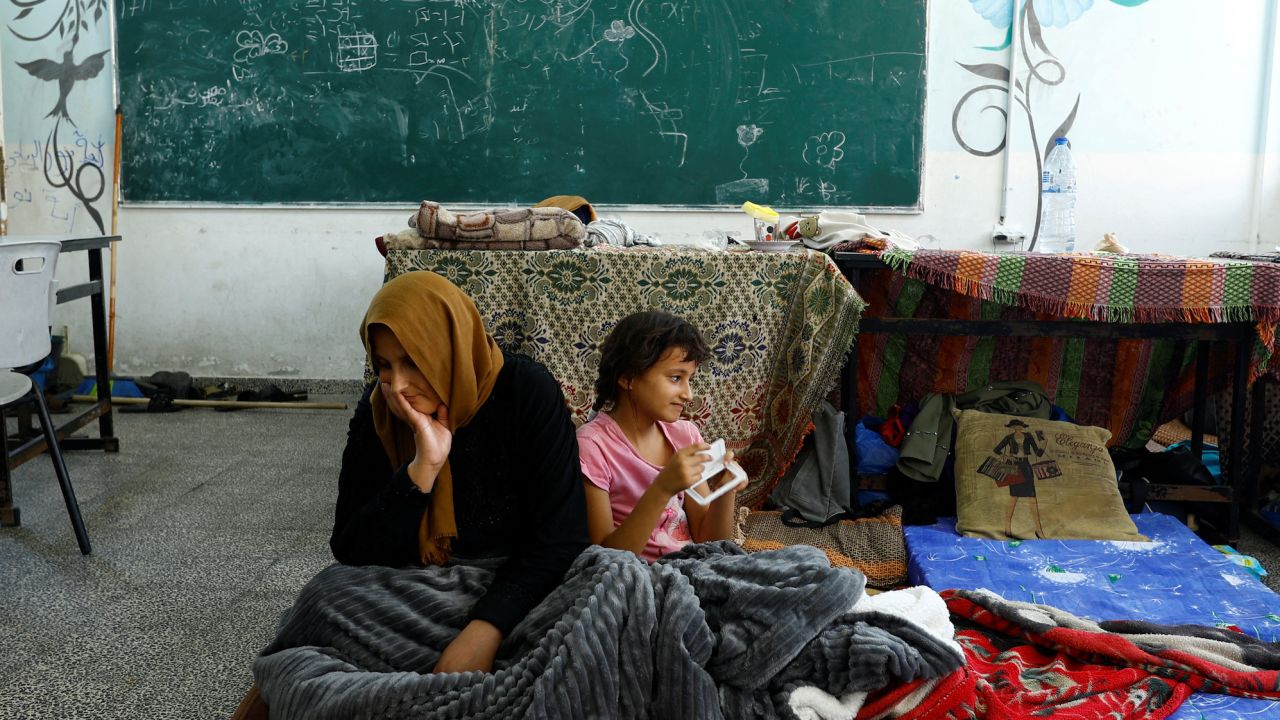
The comments came as Iran’s Foreign Minister Hossein Amir-Abdollahian met with Hamas political leader Ismail Haniyeh in Doha, Qatar on Saturday, according to Iran’s official news agency IRNA. The agency said it was the first official meeting between Iranian officials and Haniyeh since surprise Hamas attack on Israel that Hamas called Al-Aqsa storm.
Hostilities with neighboring Lebanon are being closely monitored internationally, as an escalation could draw the powerful Iran-backed Hezbollah paramilitary group into the conflict.
For days, Lebanon-based Palestinian militants have launched rockets into Israel, leading to Israeli attacks on Lebanese territory, including Hezbollah positions. Hezbollah has fired back at Israeli border positions with precision-guided missiles.
On Saturday, Israel returned fire after Hezbollah launched an attack on the disputed territory of the Shebaa farms near the Israel-Lebanon border, with CNN teams on the ground reporting prolonged shelling.
Mourners also gathered Saturday for the funeral of Reuters journalist Issam Abdallah in southern Lebanon after he was killed when Israel fired artillery into the area where he and other journalists were on Friday. The IDF said it was reviewing the circumstances surrounding the incident on the Lebanese border.
CNN’s Caitlin Hu, Mariya Knight, Kareem Khadder, Artemis Moshtaghian, Adam Pourahmadi, Sarah El Sirgany, Tamara Qiblawi, Pauline Lockwood, Kareem Khadder, Eyad Kourdi, Sana Noor Haq, Hande Atay Alam and Chloe Liu contributed reporting.

